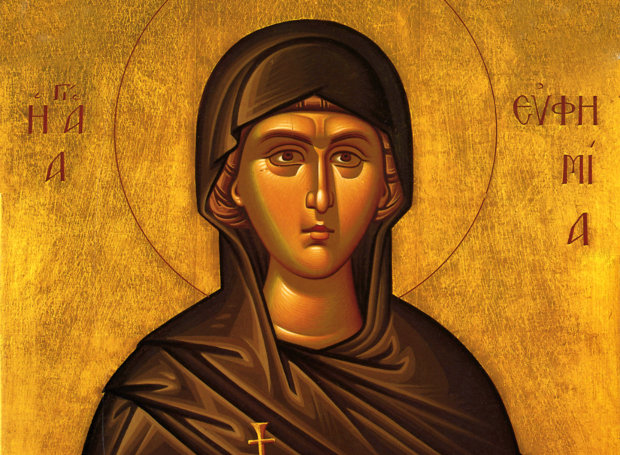Next, Priscus ordered a pit to be dug and filled with knives, covered with earth and grass. However, once again, Saint Euphemia remained unharmed as she walked over the pit. Finally, she was sentenced to be devoured by wild beasts in the arena. But even the animals refused to harm her, only licking her feet. It was only when a she-bear wounded her foot slightly that the Holy Great Martyr Euphemia passed away, causing an earthquake as her soul departed.
Her body was taken by her parents and buried near Chalcedon. A grand church was later built over her grave, where the Fourth Ecumenical Council was held in 451. During this council, Saint Euphemia miraculously confirmed the Orthodox faith, exposing the Monophysite heresy.
When Chalcedon was captured by the Persians in 617, her relics were transferred to Constantinople and later recovered from the sea after being thrown in during the Iconoclast heresy. Today, her incorrupt body rests in the Patriarchal Church of Saint George in Constantinople.
Portions of her relics can also be found in Kykkos Monastery on Cyprus and in the Saint Alexander Nevsky Lavra at Saint Petersburg. Saint Euphemia’s life and martyrdom serve as a powerful example of unwavering faith and devotion to God, even in the face of severe persecution and torture.
Upon seeing this, two soldiers, Victor and Sosthenes, came to believe in Christ, for which they were thrown to the wild beasts, and thus gloriously ended their earthly lives. Euphemia was then thrown into a pit filled with water and every kind of poisonous vermin; but she made the sign of the Cross over the water and remained unharmed. She was finally thrown to the wild beasts and, with a prayer of thanksgiving to God, gave up her spirit. Her parents buried her body honorably. Euphemia suffered in the year 304 A.D. and entered into eternal joy. She is also commemorated on July 11.
Saint Euphemia was from Chalcedon and lived in virginity. According to some, she suffered martyrdom during the reign of Diocletian, in 303; according to others, in 307. Her sacred relics are preserved in the Patriarchate in Constantinople.

